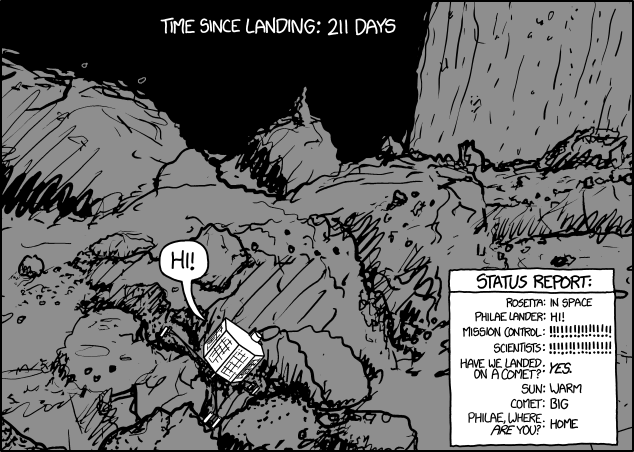The three-legged lander had to be released at exactly the right time and speed because it could not be controlled on its descent. On its way down, Philae gathered data and images, which were relayed back to Earth.
Engineers designed the lander not knowing what type of terrain they would find on the comet’s surface. Rosetta has been taking pictures of the comet and collecting samples from its atmosphere as it approaches the sun, showing it is not as smooth as initially hoped, making landing more tricky.
via Space probe lands on comet in historic mission – Chicago Tribune.
From: Philae landing preview: What to expect on landing day
Philae’s legs are designed to damp out the forces of a hard landing to reduce the lander’s chance of bouncing. When Philae touches down, it will fire two harpoons to attach it firmly to the comet’s surface. A thruster on top of the lander fires at the same time as the harpoons, keeping the lander on the ground. Ice screws also deploy from the three lander feet.
From Twitter

UPDATE: From Rosetta mission: Philae craft may have bounced during comet landing – as it happened
Philae may have landed not once but twice – that’s the final message from Esa this evening.
According to Stephan Ulamec, Philae Lander Manager, DLR, the lander team believe that Philae may have bounced from the surface and settled again in a slightly different place.




